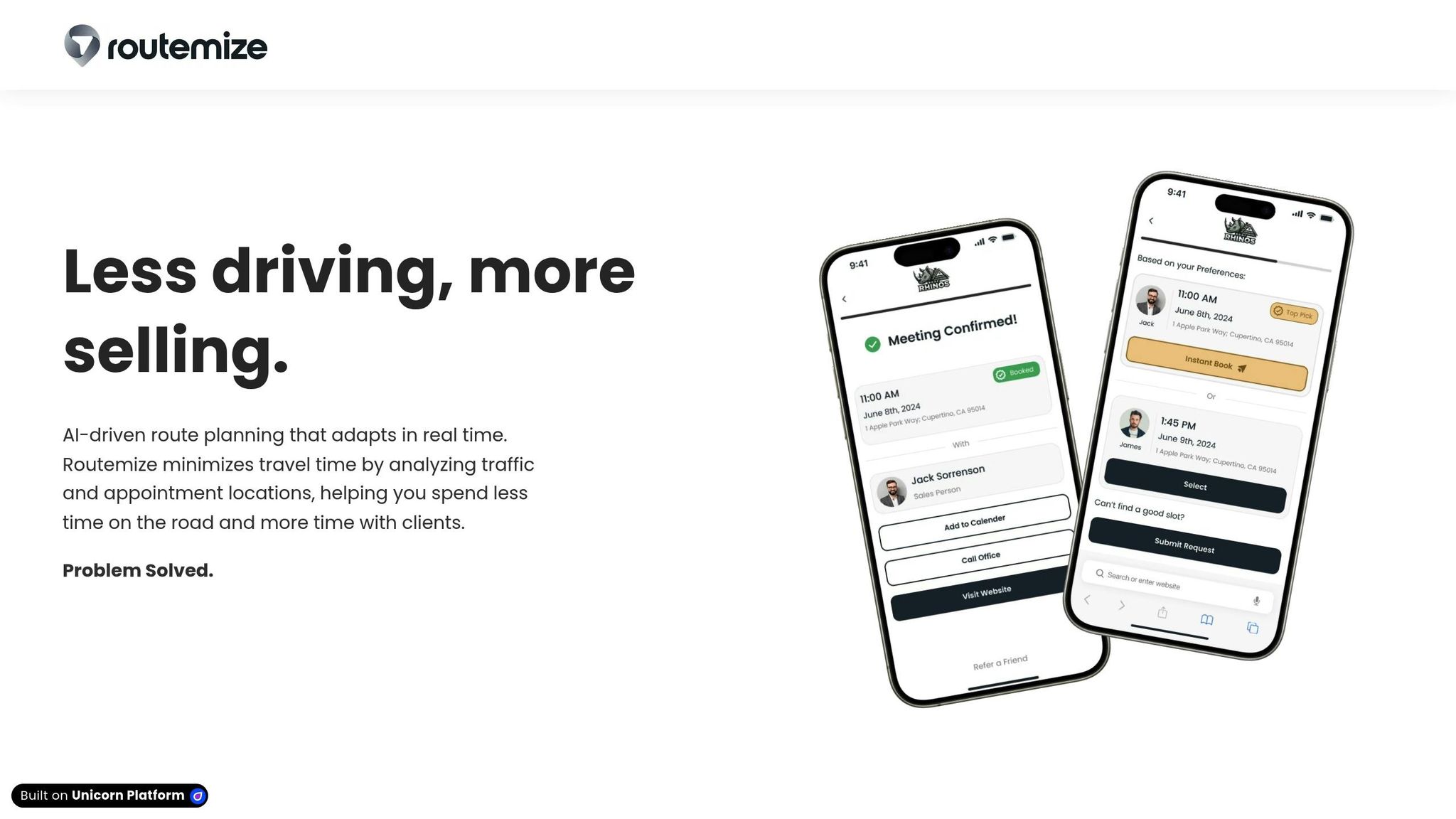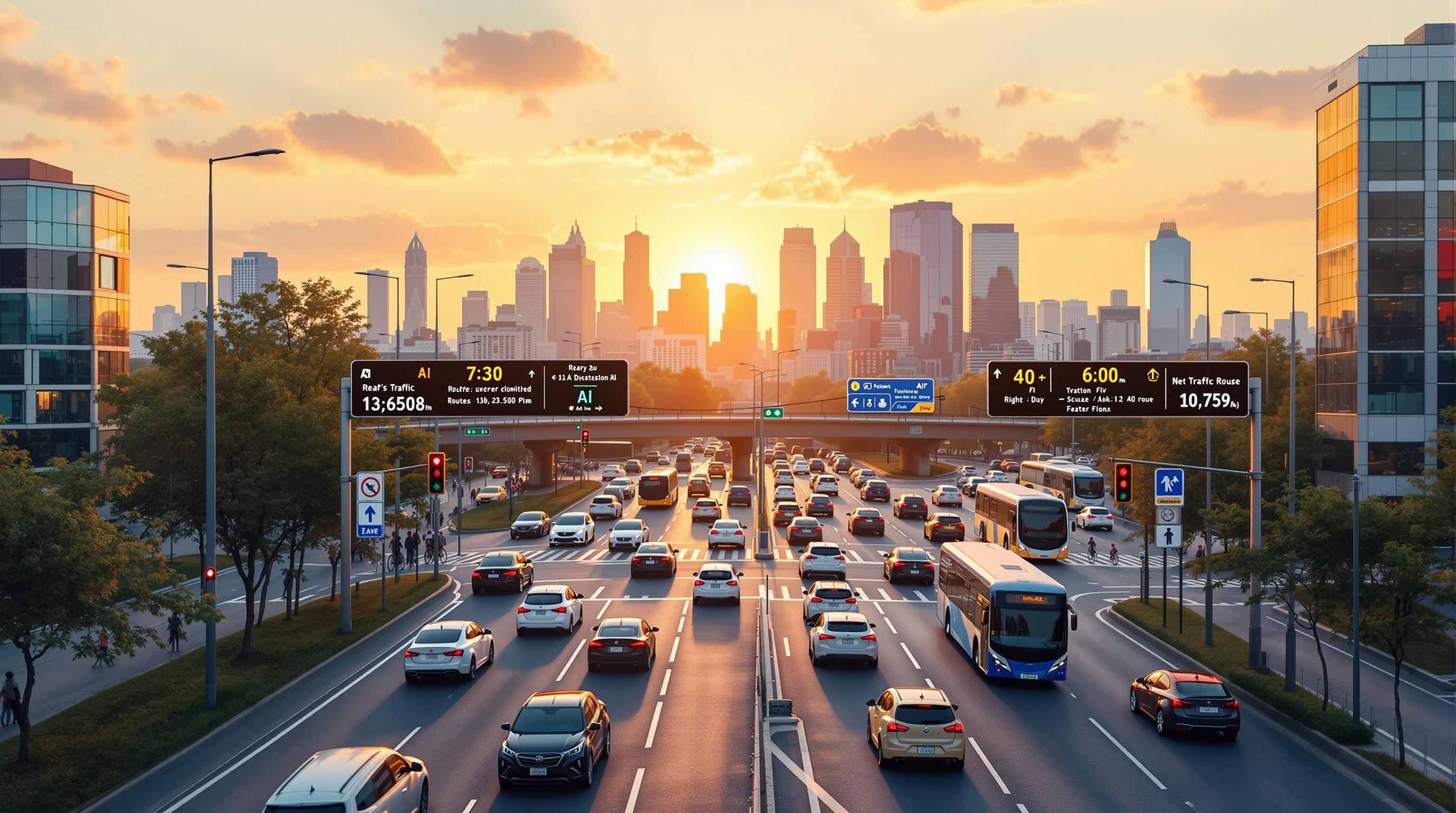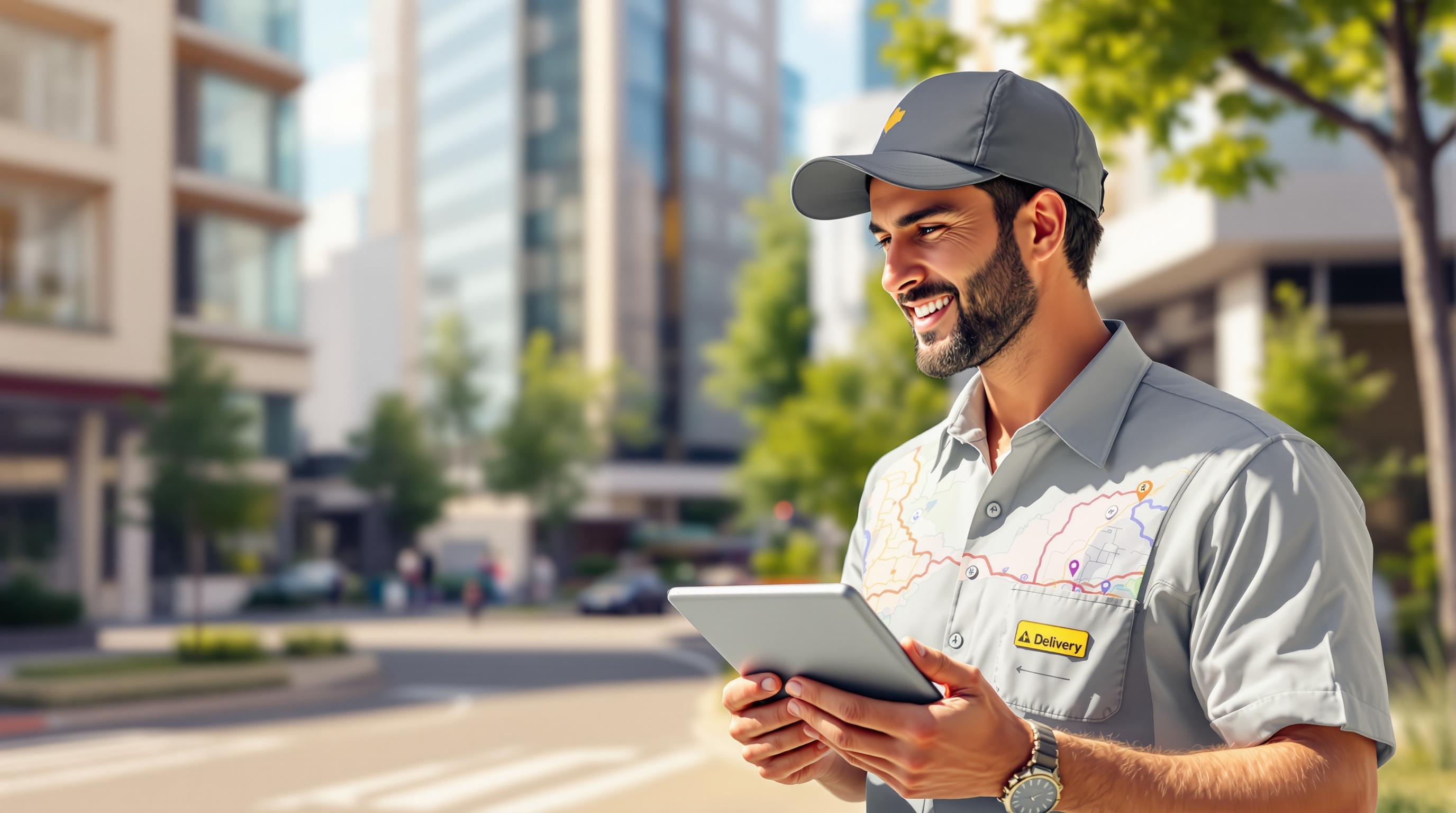Predictive analytics helps businesses save time and money by forecasting traffic, weather, and delays to optimize travel routes. Here's how it works:
- Analyzes Data: Combines historical traffic patterns, real-time updates, and weather forecasts to predict delays.
- Optimizes Routes: AI tools like Routemize adjust routes in real time based on live traffic and schedules.
- Improves Efficiency: Reduces fuel costs, increases stops per day, and ensures timely arrivals.
- Enhances Customer Experience: Provides accurate arrival windows and instant updates to clients.
AI-Driven Logistics Solutions | Logistics Route Optimizer
Predictive Analytics in Route Planning
Predictive analytics helps reduce travel time by analyzing various data sources and adjusting routes in real time.
Traffic Pattern Analysis
Using both live updates and historical data, traffic analysis combines information like real-time congestion, incident reports, event schedules, and weather forecasts. By blending past trends with current conditions, it can predict delays and suggest alternate routes before traffic builds up.
Schedule and Location Management
Route optimization aligns scheduling needs with location data. It matches appointment times to stop locations and sequences stops based on both timing and geography.
Machine Learning for Better Routes
Machine learning improves route predictions by analyzing actual trip data. By comparing predicted travel times with real trip outcomes, the system fine-tunes its models for better accuracy.
Routemize leverages these predictive analytics and machine learning tools in its AI-powered route optimization, helping businesses adjust quickly to changing conditions and reduce time spent on the road.
Main Advantages of Predictive Route Planning
Predictive route planning offers three key benefits: cutting costs, improving customer service, and making workdays more efficient.
Cutting Costs and Saving Time
By using predictive analytics to avoid traffic and congestion, businesses save on fuel and vehicle wear-and-tear. Plus, teams can handle more stops each day by leveraging traffic patterns and appointment schedules.
Improving Customer Service
Precise arrival windows and instant updates help minimize wait times and keep clients informed. Automated alerts notify customers immediately of any delays, reducing uncertainty.
Maximizing Productive Hours
Spending less time on the road means more time for client meetings and additional stops. It also helps reduce overtime and distribute workloads more evenly. As the system learns from travel data, schedules become even more efficient, supporting business growth.
sbb-itb-7020db0
Setting Up Predictive Route Planning
You can set up predictive routing in three steps: gather your data, configure Routemize, and fine-tune predictions.
Gathering the Right Data
The backbone of predictive route planning is solid data. Focus on collecting these essential details:
- Historical traffic patterns: Note peak congestion times and recurring traffic trends.
- Client locations: Record precise addresses and any access requirements.
- Appointment durations: Compare scheduled visit lengths with actual times.
Store this information in a central database to identify baseline patterns for your routes. Once that's done, import the data into Routemize to start generating optimized schedules.
Configuring Routemize for Route Planning

Here’s how to get started with Routemize:
- Upload your client addresses and traffic data.
- Set working hours and any specific appointment constraints.
- Enable real-time traffic monitoring and automatic updates to keep routes efficient.
Fine-Tuning Predictions
To improve accuracy, monitor these key metrics:
- Arrival accuracy: Compare predicted arrival times with actual ones to adjust estimates.
- Route efficiency: Measure miles driven against the number of stops completed.
- Time savings: Track total travel time reductions to evaluate performance.
Review these metrics weekly, update your database, and tweak route parameters as needed. The more data you feed into the system, the better your predictions will become, reducing delays and improving efficiency.
What's Next in Travel Planning
Advances in AI Technology
AI is now capable of combining live traffic updates, weather conditions, and sensor data to adjust routes on the fly. This helps minimize delays and ensures smoother travel experiences.
Personalized Route Planning
Businesses looking to stay ahead in this space can:
- Participate in beta programs: Test out AI-powered route optimization tools early and integrate them with your current data systems.
- Provide feedback: Help improve routing algorithms by sharing insights based on actual travel conditions.
Up next, take a look at Success Stories that highlight how these AI advancements are transforming travel planning.
Conclusion
Predictive analytics is transforming route planning by combining historical and live data with tools like real-time traffic analysis, location adjustments, and smart scheduling. This approach allows for dynamic changes as conditions evolve.
Routemize’s AI system processes traffic and appointment data in real time, moving route planning from a reactive approach to a more forward-thinking strategy.
The future of travel planning lies in AI and machine learning, which streamline field team operations. With platforms like Routemize (currently in beta), businesses can test AI-driven routes that enable quicker arrivals and provide clear updates to customers. Predictive routing is shaping the next phase of efficient and customer-focused travel management.


